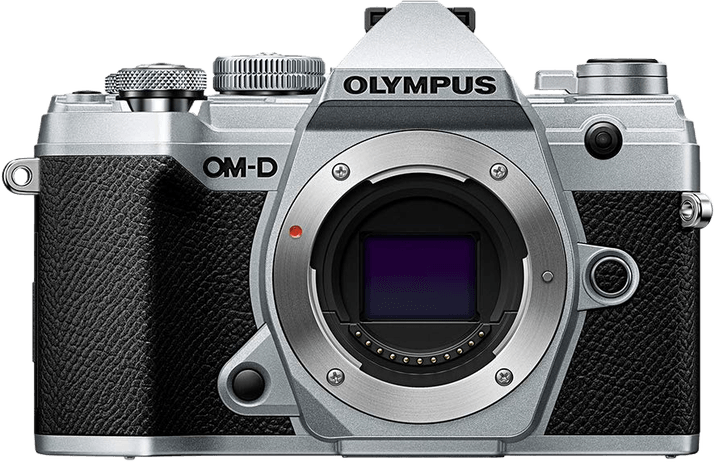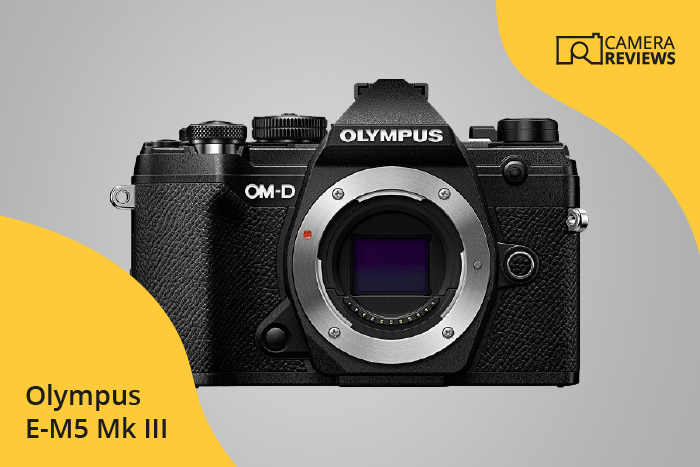Olympus OM-D E-M5 Mark III Specs and Scores

The Olympus OM-D E-M5 Mark III receives a score of 65/100, reflecting its place in the competitive mirrorless camera market. Announced on October 17th, 2019, and released at $1199, this camera measures 125 x 85 x 50mm and weighs 414g (0.91lbs). Although not the newest model in the market, the E-M5 Mark III’s specifications still hold up well against its competitors, offering good value for its price. The camera’s size and weight make it user-friendly, and its performance is suitable for various photography needs.
Olympus OM-D E-M5 Mark III Overview and Optics
The Olympus OM-D E-M5 Mark III earns a score of 60/100 for its optics. With 20 megapixels, a shooting speed of 30, and a CMOS sensor, this camera provides satisfactory performance in the market. The TruePic VIII processor and a DXOMARK score of 55 for the sensor contribute to the camera’s capabilities.
The Micro Four Thirds sensor size, Micro 4/3 lens mount, and 4:3 aspect ratio are standard features in this category. The image stabilization ensures sharp and steady shots, making it suitable for various photography scenarios.
Considering the specifications, the Olympus OM-D E-M5 Mark III offers decent optics performance. However, it may not outshine competitors in the market.
Olympus OM-D E-M5 Mark III Video Performance
The Olympus OM-D E-M5 Mark III boasts a video score of 91 out of 100. This high score is due to its impressive video capabilities, including a maximum resolution of 4K and video dimensions of 4096 x 2160. Additionally, the camera offers a maximum video frame rate of 120fps, allowing for smooth slow-motion footage.
In today’s competitive market, the E-M5 Mark III stands out with its built-in time-lapse functionality, providing users with creative options for capturing stunning visuals. This feature sets it apart from other cameras in its class, making it a strong contender for those interested in video production.
The Olympus OM-D E-M5 Mark III’s video capabilities make it a top choice for those seeking high-quality performance. With its impressive specifications and user-friendly features, it is a reliable and versatile camera for both casual and professional videographers.
Olympus OM-D E-M5 Mark III Features and Benefits
The Olympus OM-D E-M5 Mark III receives a feature score of 83/100. Boasting a 3-inch touchscreen with a resolution of 1,040,000 dots, it provides clear and detailed image previews. The flip screen adds versatility for various shooting angles.
In the competitive camera market, the E-M5 Mark III holds its own. Its lack of GPS is compensated by the inclusion of WIFI and Bluetooth capabilities, allowing seamless connectivity and easy photo sharing.
Taking all features into account, the Olympus OM-D E-M5 Mark III offers a strong combination of performance and functionality. Its score of 83/100 reflects its impressive capabilities and solid position in the market.
Olympus OM-D E-M5 Mark III Storage and Battery
The Olympus OM-D E-M5 Mark III receives a storage and battery score of 35/100. This camera comes with a single memory card slot, accepting SD, SDHC, and SDXC cards, with UHS-II compatibility. In terms of battery life, it can capture up to 310 shots using the BLS-50 battery. The camera also supports USB charging.
When compared to other cameras in the market, the E-M5 Mark III’s storage and battery capabilities may not be the most impressive. The single card slot and moderate battery life may be sufficient for casual users, but professionals might require more. Despite these limitations, the camera’s USB charging feature adds a level of convenience for on-the-go usage.
The Olympus OM-D E-M5 Mark III’s storage and battery aspects may not be its strongest points, but it still offers a reliable performance for photographers who can work within its constraints.
Olympus OM-D E-M5 Mark III Alternatives
Do you want to know how the Olympus OM-D E-M5 Mark III compares to its competitors? Have a look at the most popular comparisons for this camera below:
- Olympus OM-D E-M10 Mark IV vs OM-D E-M5 Mark III
- Fujifilm X-T5 vs Olympus OM-D E-M5 Mark III
- Olympus OM-D E-M5 Mark III vs Panasonic Lumix DC-G9
- Olympus OM-D E-M1 Mark III vs OM-D E-M5 Mark III
- Nikon Z fc vs Olympus OM-D E-M5 Mark III
- Olympus OM-D E-M5 Mark III vs OM System OM-1
Olympus OM-D E-M5 Mark III FAQ
Does the Olympus OM-D E-M5 Mark III Have Built-in Image Stabilization?
Yes, the Olympus OM-D E-M5 Mark III features a 5-axis in-body image stabilization system, providing up to 5.5 stops of stabilization for sharper images and smoother video.
Does the Olympus OM-D E-M5 Mark III Support 4K Video Recording?
Yes, the Olympus OM-D E-M5 Mark III supports 4K video recording at 30fps, allowing for high-quality, detailed footage and creative video options.
What Size Sensor Does The Olympus OM-D E-M5 Mark III Have?
The Olympus OM-D E-M5 Mark III is equipped with a Micro Four Thirds sensor, providing a balance between image quality, size, and lens compatibility.
Does the Olympus OM-D E-M5 Mark III Have a Dual Memory Card Slot?
No, the Olympus OM-D E-M5 Mark III has a single memory card slot, which supports SD, SDHC, and SDXC cards, including UHS-II cards for fast read/write speeds.
Does the Olympus OM-D E-M5 Mark III Have a Touch Screen?
Yes, the Olympus OM-D E-M5 Mark III features a 3-inch vari-angle touch screen, allowing for easy navigation, image review, and touch focus control.
Does the Olympus OM-D E-M5 Mark III Have Wi-Fi and Bluetooth?
Yes, the Olympus OM-D E-M5 Mark III has both Wi-Fi and Bluetooth connectivity, enabling wireless image transfer, remote control, and easy sharing via compatible devices.
Does the Olympus OM-D E-M5 Mark III Have GPS?
No, the Olympus OM-D E-M5 Mark III does not have built-in GPS. However, geotagging is possible by syncing with a compatible smartphone’s GPS data via the Olympus Image Share app.
Is the Olympus OM-D E-M5 Mark III Weather Sealed?
Yes, the Olympus OM-D E-M5 Mark III features a weather-sealed body, providing protection against dust, moisture, and freezing temperatures for reliable performance in various conditions.
Does the Olympus OM-D E-M5 Mark III Have a Built-in Flash?
No, the Olympus OM-D E-M5 Mark III does not have a built-in flash, but it includes a small external flash in the box that can be attached to the camera’s hot shoe when needed.

